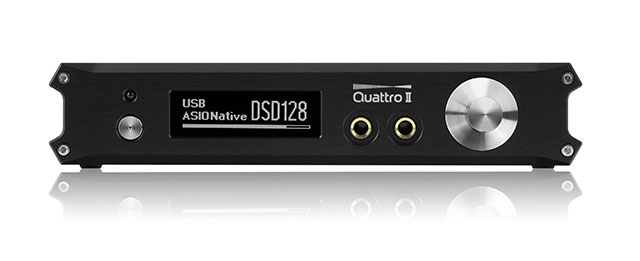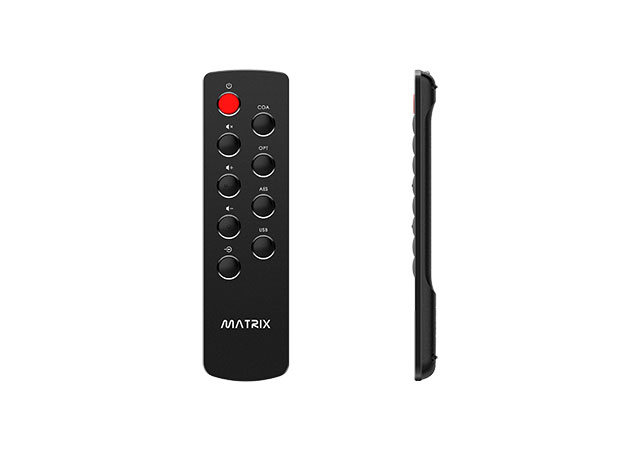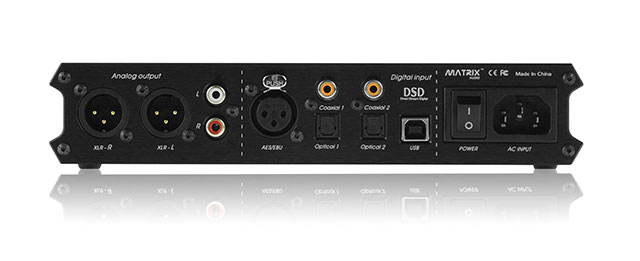Matrix Quattro II Review at The WAM Forum
| This excellent review originally published at The WAM HiFi and music forum by George 47. |
One of the great benefits of reviewing audio for the Wam is you come across some really interesting products. The Audiovalve amplifier was a great find. Its sound was everything you would expect from a great valve amplifier and it had distinctive, steampunk styling.
I also discovered the audio market has developed what I call ‘all-in-one’ front ends. They consist of a DAC, a preamplifier and a headphone amplifier all in one box. I reviewed two of these all-in-one boxes and the sound quality was a pleasant surprise. But the big problem was that although they sounded good they were expensive. Whilst spending multi-thousands on an all-in-one box is reasonable value what do you do if your budget is not over a thousand and you still want a good sound? Enter Matrix Audio.
Matrix Audio is based in Xi'an, China. Xi'an is an ancient city that is several thousand years old. It used to be the capital of ancient China and was so for 13 dynasties. The team at Matrix Audio are all into music and electronic/digital products. The CEO and CTO (Mr. Yang) have funded an audio studio for more than 10 years and started the Matrix Electronic Technology Company about 5 years ago.

Matrix has an extensive range of more than 10 different models in 3 series, the X series, the Mini-i series and the Quattro series. For my review I listened to the Quattro II.
I built up an image of what the Quattro II would be like. It would have an amorphous high density plastic box, amorphous circuit components and would sound well….amorphous and bland.
The Quatttro II is packaged in a white glossy cardboard box. The Quattro II is a small, half sized 205×232×49mm black box. BUT. It is made of metal. Not only that this is no bent metal box, it is a solid CNC machined, thick aluminium case. It is a weighty item for something so small. There are no lid screws, just some stainless, machined screws on the front of the case. It is also superbly black anodised. And the remote control is a neat small handset made of aluminium, not a plastic abomination from the spare parts box. Amorphous plastic box? Wrong.

OK how about the components used? It has the ‘magic’ ESS Sabre ES9018S DAC chip inside. This chip has fantastic specifications and deals with a large number of sample rates. The Quattro II has six digital inputs and can handle numerous digital sampling rates. USB deals with everything up to 32 bit 384 kHz PCM. The Quattro II also plays DSD, DSD64, DSD128 and DSD 264 via DoP, dCS and ASIO (native). OK very versatile. The Quattro II uses very low noise op amps (LME49720 ultralow distortion) and boasts a noise specification of >120 db. Amorphous components? Wrong.

The Quattro II’s inputs include AES, coaxialx2, opticalx2 and USB. The outputs are RCA and XLRs with two headphone outputs on the front. I did all the volume control and switching using the neat remote.
So how about the sound?
I started using the Quattro II with headphones. I used my Senheisser HD202 and the sound was not bad. In fact it was actually a lot better than I expected. It was clear and transparent and voices were very clear and all the words were easy to hear. I have lost count of the number of high end audio systems I have heard where you cannot clearly hear the words being sung. Most singers have a message to their songs whether it is sad, happy, angry or whatever. It should be obvious what they are singing.
OK Bruce Springsteen is an exception.
The Quattro II allows you to decipher the words easily.
The Quattro II did not have that sharp, clean and ultimately sterile sound of other ESS Sabre chips. A great start. I used my Logitech Touch connected to the Quattro II with the Quattro II in preamp mode. I tried all the digital inputs and found USB gave the best sound quality and was the most versatile. The Quattro II had some issues with my Senheisser Momentums due to their low impedance (18ohms) but all the other headphones worked without problems. The overall sound was very good and if you wanted to use is as a headphone amplifier it would work well. But it would only be using a part of what it can do.
OK over to the big system. I fed the Quattro II with an Auralic Aries and took the XLR outputs into my Nord Class D amp and on to my Audionote Es (silver wired). I used my collection of ‘test’ music (no bland jazz stuff) and the system gave a good account of itself. The sound was clear, neutral and had good dynamics. It was easy to hear the lyrics. The contrast between well recorded tracks and those great music tracks that are not so well recorded was easy to hear. I soon left the test tracks behind and just listened to music that interested me including the latest albums. This was fun.
The bass attack and timing was very good and fast tracks kept that speed really well. No slowing down of the pace due to a fat, slow bass or thin bass with just a ‘pip’ in the background. No it did not capture that last bit of deep bass but give the little guy a break. The mid-range was clear and voices were easy to hear. The 3D soundstage had more width than depth but what depth was there was only slightly curtailed and would probably not be missed. To be honest I was just having great fun. This system performed well and only uses a few boxes rather than my normal collection that takes over the top end of the living room. Need to keep it away from the wife and that ultimate comment ‘what that little box does what those three big ugly boxes do?’
I could get picky but remember that every component in this system, including the cables, were at least 50% more expensive than the Quattro II.
o over the next few days I was playing a lot of favourite music including opera where it was easy to hear the words even if I could not understand the language. Maria Callas sounded clear and easy on the ear as well as being suitably dramatic. Girl and guitar is the real forte of this set up.
Big powerful rock and classical was played with real dynamics. OK the ultimate dynamics and emotional quotient was reduced but boy would it cost you a lot to realise it.
So in summary, this little box is not an amorphous bland box. It uses CNC machined aluminium, with highly desirable audiophile components, it is easy to use and extremely versatile and the sound is good. The few areas where it does not shine is no great deal and I can see it being used in a system with active speakers or a separates system with better power amplifiers and speakers and still not be out of its depth. At the cost (£999) I am not sure there is a much competition and it is lot better than the amorphous boxes out there. An interesting company that is well focused. The Quattro II is great value for money. I also have their USB/SPdif for review next.